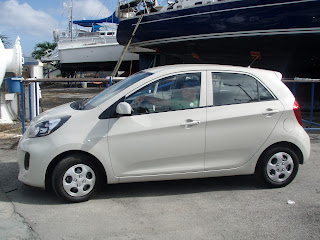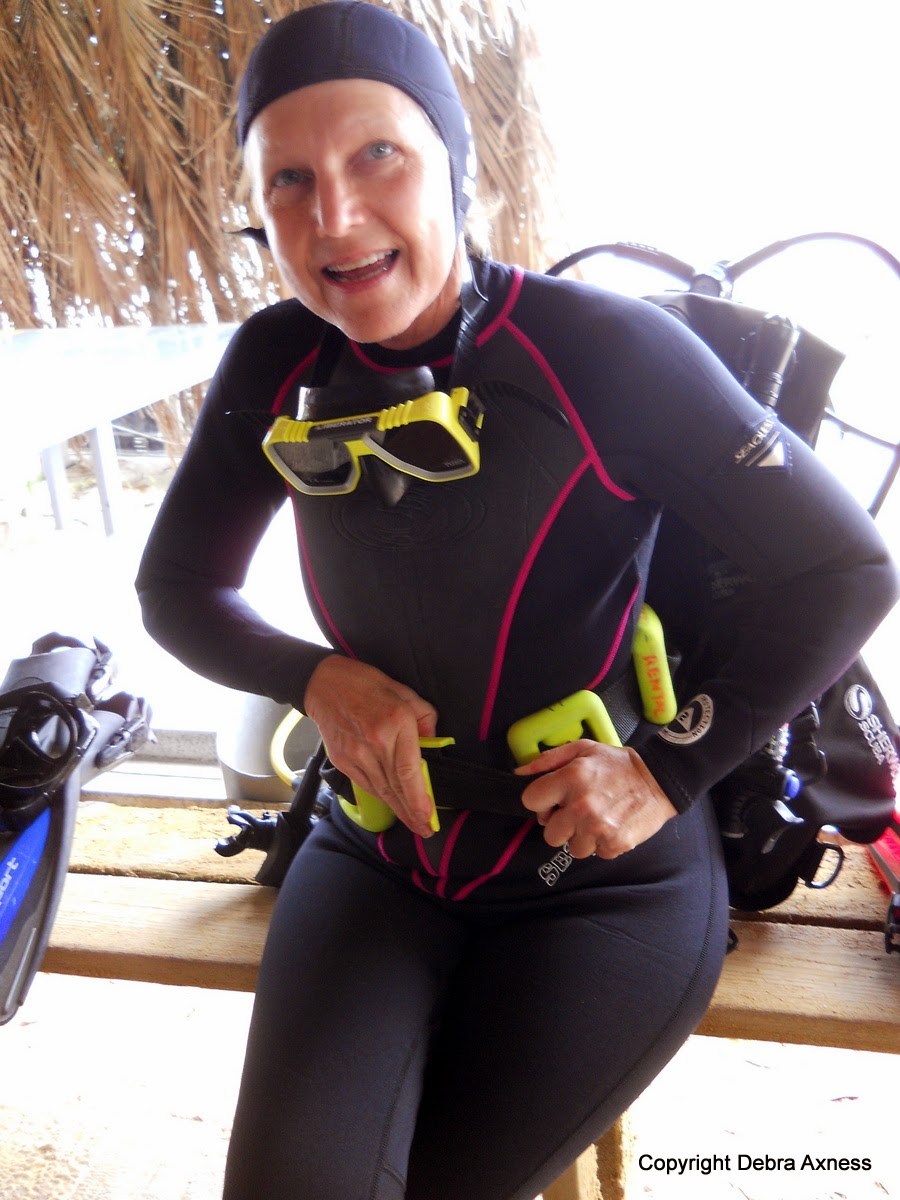Living on a boat has its challenges but also its serendipitous moments. We meet some interesting people in the course of their travels. People sail into the boatyard to haul their boats, work on them, and then store their boats or sail away. It's a very different kind of community, one whose makeup changes every week. Recently many boats have sailed away, their projects completed.
In the slip next to us was a boat that had just been purchased by an engaging Dutch couple. It was their first boat, and they flew to the neighboring island of Aruba to see what life aboard a boat in the Caribbean would be like.
 |
| Wietze and Ria |
 |
| Wiri, a Dutch boat next door |
They sailed the boat from Aruba to Curacao, and were busy every day with projects, like everyone else around us. They are appealing and friendly, quick with a smile and conversation. Their boat is an aluminum cutter rigged sloop. We don't see many aluminum boats; most sailboats here are made out of fiberglass, like ours. We enjoyed their company for several weeks, and now they have flown back to Holland until next October.
 |
| Ferro-cement sailboat |
On the other side of us is an industrious Austrian couple with a very unusual boat, made out of cement. It is a tidy rig, with two masts, a ketch with many hand-made add-ons, and they are busy all day with new projects. They are also friendly, but will be sailing away to other parts of the Caribbean next week. They carry full-size bicycles on their boat to get around on the islands when they come into port. It's still hard to believe that cement can make up a floating hull.
 |
| Sparkman and Stephens 1963 sailboat |
Down the dock is one of the more compelling characters we have met recently, Pablo. He is a US Coast Guard certified captain, and has been tasked with getting this boat ready to sail and delivering it to Maine. It is one of the few wooden boats here, and was made in 1963. Pablo is from New Mexico, and he relocated to New England some years ago to become a lobster fisherman. He spent six years engaged in commercial fishing on the Grand Banks, like the Perfect Storm boats. His tales of fishing in all types of weather off the coast leave us spellbound. He was even swept overboard once, and lived to tell about it! Whenever our projects leave us despondent we go talk to Pablo. What he is working on with this much older boat dwarf anything we are doing, and leave us feeling like our projects are all very achievable. When I first met him, his boat was sinking at the dock in late December - a wooden boat can ship water between its planks, and that's what was happening. Thankfully it did not go under, due to the timely use of several emergency pumps.
Ibis is almost twice the size of our boat, and all of its systems are more complicated.
 |
| The Great Dane |
Up "on the hard", as we say, still on land, is my favorite name for a boat.
Great Dane is a steel ketch from Nova Scotia, and has been in the yard for a long time. We haven't met her owners, but perhaps they are of Danish ancestry.
 |
| Highland Breeze |
At the end of our dock is the largest boat here, 112 feet long. It has a crew of four or five, including a captain, cook, engineer, and deckhand. Everything is automated on this boat - sails go up with the push of a button, the anchor comes up and goes down with hydraulics, along with many more systems that must be continuously maintained. It is a wondrous machine to behold, but I wouldn't want its maintenance! The boat has crewed charters, where people fly in to Curacao and spend a few days or weeks aboard, sailing the Caribbean.
Just a few of the more interesting boats and people we have gotten to know here in Curacao.






















































